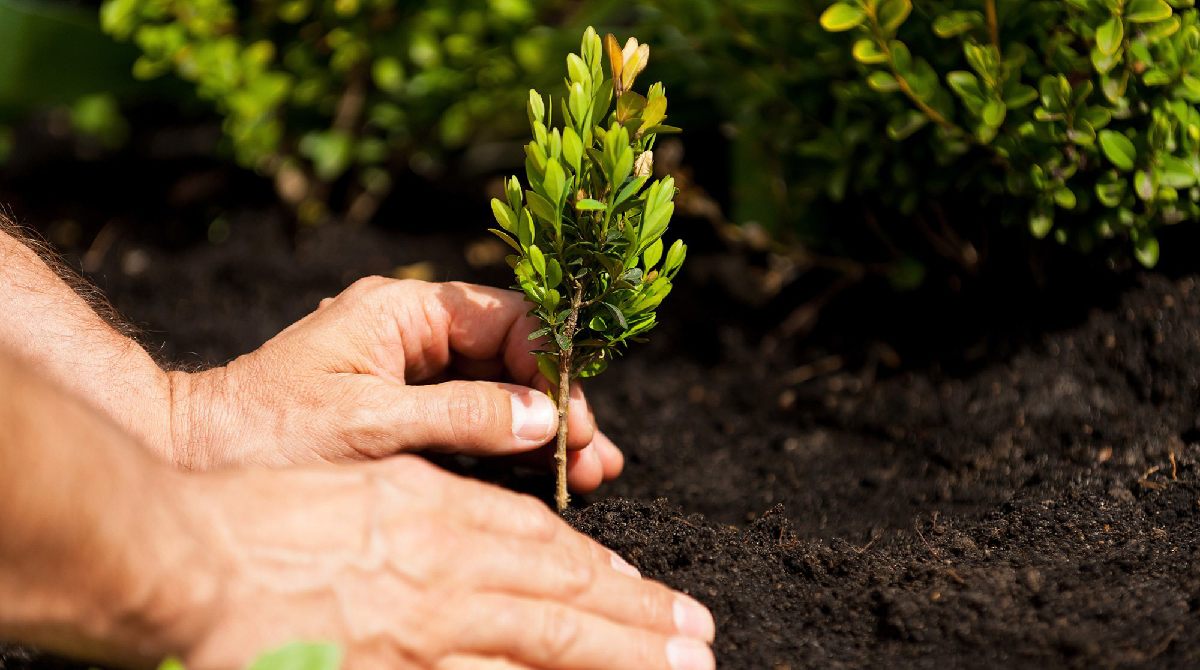
Date May 05, 2025
Best Practices for Fertilizing Different Types of Trees
Photo by Miłosz Klinowski on Unsplash
Deciduous vs. Evergreen Trees
Specific Nutrient Needs and Fertilizing Techniques for Each Type
Different types of trees have unique nutrient requirements which influence the specific fertilizing techniques used. Deciduous trees, for example, often need higher amounts of nitrogen to support their rapid leaf growth in the spring, while evergreens may require a balanced approach with less nitrogen but increased micronutrients like iron and magnesium to maintain their foliage year-round. Fruit trees might need higher phosphorus levels to promote flower and fruit development. The method of fertilizer application also varies; granular fertilizers are commonly used for broad application, especially for large areas, while liquid fertilizers might be preferred for targeted application around specific trees to quickly address deficiencies. It’s crucial to follow recommended rates based on the tree type and existing soil nutrient levels, as over-fertilization can lead to nutrient runoff and damage to the tree.
Seasonal Considerations for Fertilizing (Spring vs. Fall)
The timing of fertilization is critical and should be aligned with the trees’ growth cycles for maximum effectiveness. In spring, fertilizing helps kickstart growth by replenishing nutrients used up during winter dormancy. This is particularly important for promoting vigorous leaf and branch development. It’s usually best to apply fertilizer just as the soil thaws and before new growth begins. In contrast, fall fertilization focuses on preparing trees for the cold months ahead. This typically involves lower nitrogen content to avoid stimulating new growth that won’t survive the winter but includes higher potassium to enhance root development and overall resilience against freezing temperatures. Additionally, fall fertilizing should be timed so that it does not coincide with late-season warmth, which can delay dormancy and make trees susceptible to damage.
Young Trees vs. Mature Trees
Differences in Nutrient Needs and Application Methods
The nutrient needs of trees vary not only by species but also by their age and the specific conditions of their environment. Young trees, for instance, generally require nutrients that promote root and foliage growth, such as higher levels of nitrogen and phosphorus, to establish themselves. Mature trees, on the other hand, benefit from nutrients that support their ongoing health and the strengthening of existing structures, requiring a more balanced nutrient mix with an emphasis on potassium for stress resistance. The application methods also differ; young trees often benefit from more frequent, lighter applications of fertilizer close to their root zones to prevent burn and ensure nutrients are readily available. In contrast, mature trees may be better served by less frequent, but deeper, applications that reach their extensively developed root systems. Specialized techniques such as deep-root fertilization can be used to inject nutrients directly into the soil beneath the grass root level, ensuring that nutrients go directly to the tree roots rather than being absorbed by surrounding turf or other ground cover.
How Over-Fertilizing Can Harm Tree Health and the Environment
Over-fertilizing can lead to several detrimental effects, not just on tree health but also on the broader environment. Excessive nutrients, particularly nitrogen and phosphorus, can lead to nutrient runoff into nearby water bodies, contributing to eutrophication, which depletes oxygen in the water and kills aquatic life. In terms of tree health, too much fertilizer can cause lush but weak growth that is more susceptible to disease and pest infestations. This rapid growth can also lead to an imbalance in root-to-shoot growth, making trees less stable and more likely to suffer damage during adverse weather conditions. Additionally, over-fertilization can cause salt build-up in the soil, which can damage the soil structure and reduce its ability to hold water, further stressing the trees. Properly assessing the nutrient needs of trees through soil testing and following recommended guidelines for fertilizer applications are crucial steps in preventing these harmful outcomes.
Organic vs. Synthetic Fertilizers
Organic and synthetic fertilizers offer different benefits and drawbacks for tree nutrition and overall landscape health. Organic fertilizers, derived from natural sources such as compost, manure, or bone meal, release nutrients slowly as they break down in the soil. This slow release provides a steady supply of nutrients, mimicking the natural nutrient cycle, which can be particularly beneficial for young or stressed trees. They also improve soil structure and increase microbial activity, which can enhance soil fertility over time. However, organic fertilizers generally have lower nutrient concentrations, which means they must be applied in larger quantities and more frequently to meet the nutrient demands of fast-growing or mature trees.
Synthetic fertilizers, on the other hand, are manufactured with specific ratios of nutrients, such as nitrogen, phosphorus, and potassium, and are designed to be immediately available to plants. This can provide a quick boost to tree growth and is especially useful during peak growth periods. However, because they are quickly available, there is a higher risk of nutrient runoff into local waterways, and overuse can lead to salt build-up in the soil, which may harm the microbial life and overall soil health. Additionally, synthetic fertilizers do nothing to improve soil structure or organic content.
Pros and Cons of Each Type
Organic fertilizers are lauded for their environmental benefits and their role in building long-term soil health. They enhance the water-holding capacity of the soil, reduce erosion, and decrease the risk of pest and disease outbreaks by fostering healthier, more resilient plant growth. However, they often require more knowledge to use correctly since their nutrient ratios are not always precisely known, and their nutrient release rates can be influenced by environmental factors such as temperature and moisture.
Synthetic fertilizers offer precision and predictability. They are easy to apply, and their effects are usually quick to manifest, making them popular in commercial agriculture and among homeowners who desire rapid improvement in their trees’ health or appearance. The drawbacks include potential environmental contamination due to leaching and runoff, risk of over-fertilization, and detrimental effects on soil biology, such as decreasing organic matter and microbial activity, which are crucial for sustainable soil health.
How to Choose the Right Fertilizer for Your Trees and Landscape
Choosing the right fertilizer for your trees and landscape involves understanding both the specific nutritional needs of your plants and the characteristics of your soil. Begin with a soil test to determine nutrient deficiencies and soil pH. This will guide you in selecting a fertilizer with the appropriate nutrient balance. Consider the stage of growth of your trees: younger trees might benefit more from organic fertilizers that encourage strong root development and improve soil structure, while mature trees might need quick nutrient boosts at certain times of the year that synthetic formulas can provide.
Also, think about the environmental impact of your choice. If you are in a region with high rainfall and sensitive water bodies, organic fertilizers might be a better choice to minimize runoff risks. On the other hand, if immediate nutrient correction is needed, synthetic products might be necessary. Ultimately, the best practice often involves a combination of both organic and synthetic fertilizers, tailored to the seasonal needs of the trees and the long-term health of the soil.
Advanced Tree Nutrition Techniques
The Use of Mycorrhizal Fungi and Other Soil Amendments to Enhance Nutrient Uptake
Incorporating mycorrhizal fungi into the soil is a sophisticated technique to boost the nutrient uptake efficiency of trees. Mycorrhizae are beneficial fungi that form a symbiotic relationship with tree roots, significantly expanding the root area that comes into contact with soil nutrients and water. This relationship not only enhances the tree’s ability to access nutrients from the soil, particularly phosphorus and other micronutrients that are typically less mobile, but also improves soil structure and increases its water-holding capacity. Other soil amendments, such as biochar and compost, can be used alongside mycorrhizal fungi to further improve soil fertility. Biochar, for instance, has a porous structure that helps retain water and nutrients, providing a conducive environment for mycorrhizal fungi to thrive, while compost adds organic matter, which enhances soil structure and provides a slow-release source of nutrients.
The Role of Mulching in Maintaining Soil Health and Providing Nutrients
Mulching plays a crucial role in preserving soil health and providing nutrients to trees. By applying a layer of organic material, such as wood chips, bark, or leaves, around the base of a tree, mulch helps to moderate soil temperatures, preserve moisture, and prevent weed growth. As the mulch slowly decomposes, it contributes organic matter back to the soil, which enhances its fertility and improves its structure. This process not only makes nutrients more accessible to tree roots but also encourages beneficial microbial activity in the soil, which can aid in the breakdown of organic material into forms more easily utilized by the tree. Furthermore, mulch helps prevent soil compaction from foot traffic or heavy rains, maintaining an aerated, healthy environment that promotes robust root growth.
When and How to Use Foliar Sprays as Supplements to Soil Fertilization
Foliar sprays are an effective supplement to soil fertilization, particularly when rapid nutrient uptake is needed or when soil conditions limit nutrient availability. These sprays are solutions of essential nutrients applied directly to a tree’s leaves, where they can be quickly absorbed through the stomata and the cuticle. This method is especially beneficial for addressing micronutrient deficiencies, such as iron or zinc, which are often not readily transported from the roots to the leaves through the soil. Foliar application is most effective when done early in the morning or late in the evening to minimize evaporation and maximize absorption. It’s important to use a correct dilution and to apply during mild weather to avoid leaf burn. While foliar sprays provide a quick fix, they do not replace the need for a comprehensive soil management plan; rather, they should be used as part of an integrated nutrition strategy to ensure that trees receive all necessary nutrients for optimal health and growth.
The Use of Mycorrhizal Fungi and Other Soil Amendments to Enhance Nutrient Uptake
Incorporating mycorrhizal fungi into the soil is a sophisticated technique to boost the nutrient uptake efficiency of trees. Mycorrhizae are beneficial fungi that form a symbiotic relationship with tree roots, significantly expanding the root area that comes into contact with soil nutrients and water. This relationship not only enhances the tree’s ability to access nutrients from the soil, particularly phosphorus and other micronutrients that are typically less mobile, but also improves soil structure and increases its water-holding capacity. Other soil amendments, such as biochar and compost, can be used alongside mycorrhizal fungi to further improve soil fertility. Biochar, for instance, has a porous structure that helps retain water and nutrients, providing a conducive environment for mycorrhizal fungi to thrive, while compost adds organic matter, which enhances soil structure and provides a slow-release source of nutrients.
The Role of Mulching in Maintaining Soil Health and Providing Nutrients
Mulching plays a crucial role in preserving soil health and providing nutrients to trees. By applying a layer of organic material, such as wood chips, bark, or leaves, around the base of a tree, mulch helps to moderate soil temperatures, preserve moisture, and prevent weed growth. As the mulch slowly decomposes, it contributes organic matter back to the soil, which enhances its fertility and improves its structure. This process not only makes nutrients more accessible to tree roots but also encourages beneficial microbial activity in the soil, which can aid in the breakdown of organic material into forms more easily utilized by the tree. Furthermore, mulch helps prevent soil compaction from foot traffic or heavy rains, maintaining an aerated, healthy environment that promotes robust root growth.
When and How to Use Foliar Sprays as Supplements to Soil Fertilization
Foliar sprays are an effective supplement to soil fertilization, particularly when rapid nutrient uptake is needed or when soil conditions limit nutrient availability. These sprays are solutions of essential nutrients applied directly to a tree’s leaves, where they can be quickly absorbed through the stomata and the cuticle. This method is especially beneficial for addressing micronutrient deficiencies, such as iron or zinc, which are often not readily transported from the roots to the leaves through the soil. Foliar application is most effective when done early in the morning or late in the evening to minimize evaporation and maximize absorption. It’s important to use a correct dilution and to apply during mild weather to avoid leaf burn. While foliar sprays provide a quick fix, they do not replace the need for a comprehensive soil management plan; rather, they should be used as part of an integrated nutrition strategy to ensure that trees receive all necessary nutrients for optimal health and growth.
In summary, the appropriate nutrition and fertilization of trees are paramount for their health and longevity. This encompasses a profound understanding of the distinct nutritional needs of various tree types, including deciduous, evergreen, young, and mature trees, and how these needs change with the seasons. The careful balancing of organic and synthetic fertilizers, tailored to the specific conditions and life stages of each tree, plays a critical role in preventing over-fertilization and ensuring environmental safety.
Enhancing Tree Health with Professional Care
At TreeNewal, our ISA Certified Arborists are experts in the nuanced field of tree nutrition and health. We bring a wealth of knowledge and advanced techniques, including the use of mycorrhizal fungi, proper mulching practices, and tailored foliar sprays, to ensure your trees not only survive but thrive. Trust TreeNewal to provide the professional guidance and services needed to maintain the vitality of your landscape. Contact us today to learn how our certified experts can help you achieve and maintain optimal tree health.
Photo by Miłosz Klinowski on Unsplash








